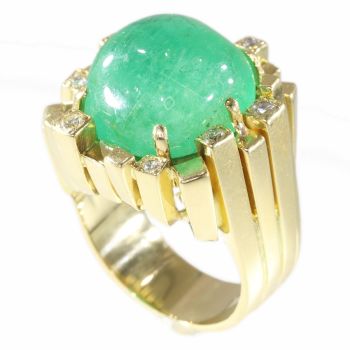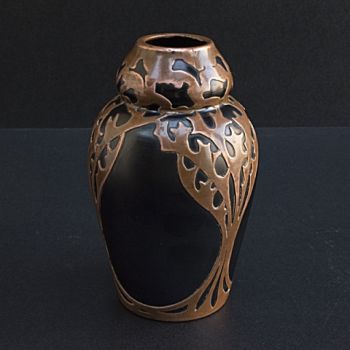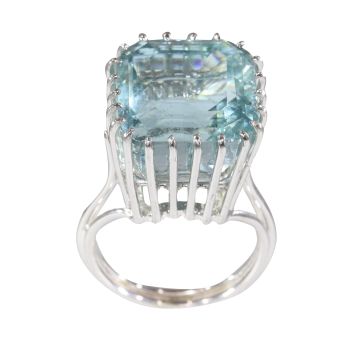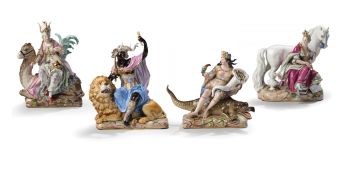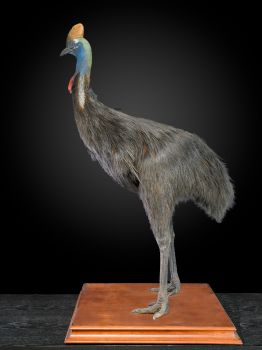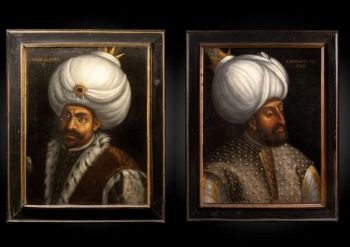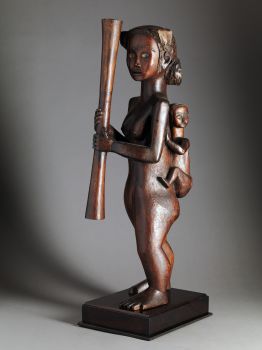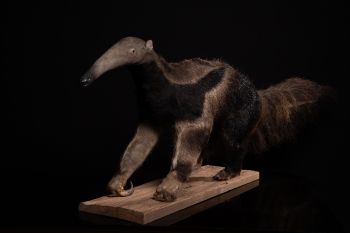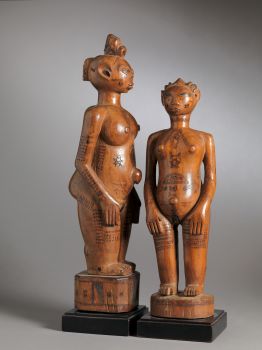Mendi Ceremonial Headdress, Western Highlands, Papua New Guinea. 1930 - 1950
Artista Desconhecido
€ 18.000
Spectandum Gallery
- Sobre arteWig with headdress “kelep” from Southern Highlands province, Mendi Valley Tribes. Hat-shaped headdress made of dark human hair and rattan, bark and bast fiber structure. The headdress is topped with a ratan structure covered with bird feathers. Polished Kina and Nassa clam shells are used as ornaments. In Papua New Guinea the practice of body adornment is known as bilas and celebrates the intrinsic interconnection of people to all things living. Over millennia, different forms of bilas have emerged, fulfilling varied everyday physical, social, and spiritual needs in unique ways. Made from an array of natural resources including shells, feathers and plant fibers, some adornments signify power or prestige, others are for cultural celebrations and ceremonial purposes.There is no better place to experience first-hand the relationship between New Guinea Highlanders and birds than at a Highlands SingSing, a traditional dance ceremony. Previously SingSings were held as part of special ceremonial feasts; today SingSings have a more contemporary impetus, being staged for regional competitions, national holidays or Christian celebrations. SingSings feature elaborately decorated men and women dancing, chanting, and playing traditional musical instruments. A wide range of Highlands people and their costumes and dances can be experienced at the Highlands Shows, held in Goroka and Mount Hagen. Dancers, each representing his or her own clan or tribe, converge on these competitive events, which last several days. The dancers offer a broad sampling of the variety of human decoration featuring bird plumes that one encounters in the Highlands of New Guinea. Using the same basic materials, each society has developed a distinct aesthetic by which it defines beauty. It is this range of interpretation of the connections between humans and birds that makes Highlands decoration fascinating, underscoring as it does the basic human desire for variety and the appreciation of beauty that unites us all.
- Sobre artista
Pode acontecer que um artista ou criador seja desconhecido.
Algumas obras não devem ser determinadas por quem são feitas ou são feitas por (um grupo de) artesãos. Exemplos são estátuas dos tempos antigos, móveis, espelhos ou assinaturas que não são claras ou legíveis, mas também algumas obras não são assinadas.
Além disso, você pode encontrar a seguinte descrição:
•"Atribuído a …." Na opinião deles, provavelmente uma obra do artista, pelo menos em parte
• “Estúdio de…” ou “Oficina de” Em sua opinião um trabalho executado no estúdio ou oficina do artista, possivelmente sob sua supervisão
• "Círculo de ..." Na opinião deles, uma obra da época do artista mostrando sua influência, intimamente associada ao artista, mas não necessariamente seu aluno
•“Estilo de…” ou “Seguidor de…” Na opinião deles, um trabalho executado no estilo do artista, mas não necessariamente por um aluno; pode ser contemporâneo ou quase contemporâneo
• "Maneira de ..." Na opinião deles, uma obra no estilo do artista, mas de data posterior
•"Depois …." Na opinião deles uma cópia (de qualquer data) de uma obra do artista
• “Assinado…”, “Datado…” ou “Inscrito” Na opinião deles, a obra foi assinada/datada/inscrita pelo artista. A adição de um ponto de interrogação indica um elemento de dúvida
• "Com assinatura ….”, “Com data ….”, “Com inscrição ….” ou “Tem assinatura/data/inscrição” na opinião deles a assinatura/data/inscrição foi adicionada por outra pessoa que não o artista
Você está interessado em comprar esta obra de arte?
Related artworks
- 1 - 4 / 12
- 1 - 4 / 9



